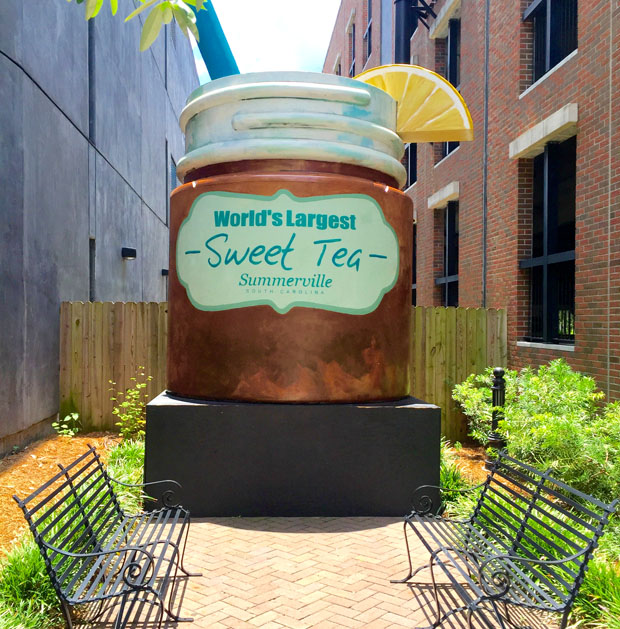Well-plated
04 Mar 2023
Make your tabletop pop with unique oyster plates
Article and photos by E.C. Waldron

It’s oyster season in one of the best oyster-eating regions on the East Coast. The Lowcountry is bivalve crazy. Besides the shucking and slurping, there are oyster ornaments, high-priced paintings and jewelry, all depicting the unique shells.
Something oyster-related you may not know about are antique serving plates made especially for serving this delicacy. In the 1800s, European oyster beds were exhausted due to overfishing. Prices rose, and only the rich could afford to serve these mollusks. Dinnerware and pottery companies soon manufactured ornamental serving plates for use in homes where many dishes had their own unique plates at the table. For instance, many hosts today couldn’t do without their favorite deviled egg serving plate.
Today, oyster plates have become collectible antiques in many coastal areas in the U.S., including the Lowcountry. They were used by wealthy households in Charleston to serve the delicacy at dinner parties in the 1800s and early 1900s
Oyster plates are for freshly-shucked or roasted oysters—the dinnerware is typically round with either five or six wells for the oysters to nestle in. Most have one or two separate wells for condiments, like cocktail or a mignonette sauce.
You can find oyster plates for sale at many high-end antique stores. These days, collectors often buy them to decorate a sideboard or even hang them on a dining room wall, rather than serve with them.
The queen of these serving dishes are majolica oyster plates dating from the 1800s. Majolica is a type of pottery which is tin glazed and then painted. Manufacturing these took extra steps and more detail work, so today they are more valuable.
On a recent day at Terrace Oaks Antiques on James Island, I was treated to a display of oyster plates by antiques dealer Lynn Henke. Henke pointed out one of her prized plates, an excellent example of majolica style. It is painted with small lobsters and crabs, with green seaweed or kelp between the wells.
“I am passionate about collecting these—they are truly works of art,” said Henke, owner of Elle St. James Antiques. She pointed out many dishes even have a dollop of paint in each well, depicting the “scar” of the oyster shell. Her booth has about 30 different plates, priced between $215 to $285. Henke says in recent times, it was TV cooking shows like Paula Deen which made the plates popular.
The prices for a prized majolica plate can approach $700 to $1,000, depending on the condition. Like other types of fine china, the company which made the piece can affect the price. European makes like Minton and Joseph Holdcroft are considered the finest. In America, Union Porcelain Works in Brooklyn produced plates until the 1920s.
A piece with no cracks or chips can get top dollar. But Henke points out if you are just starting out to collect these pieces of fine china, paying less for a plate with a chip might be worth it.
“You can hang the plate in a certain way to hide the chip,” said Henke. She adds that even a crack may be stapled on the back of the dish to hold it together—and you may not see the crack in the front.
Just looking at the displays of the plates—and there are several different booths at Terrace Oaks which feature them—is a way to sample the artistry and celebration of the sea life of an oyster.
The ceramic artisans of the 1800s included beautiful paintings of fish, crabs, shrimp, seaweed, and kelp as decoration. But it was the mollusk which has its own display well to rest in, framed as if to say, “swim around me and flow past; it is me the oyster who will be consumed and appreciated!”











